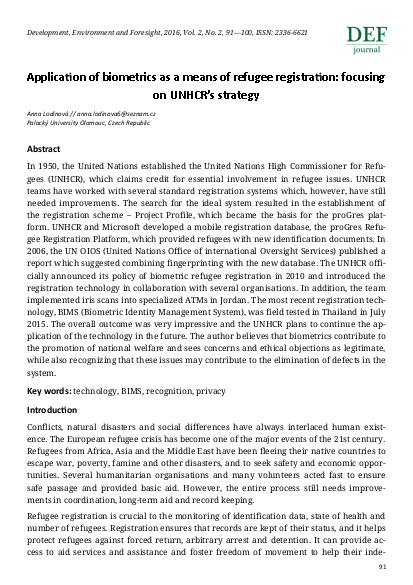
In 1950, the United Nations established the United Nations High Commissioner for Refu-gees (UNHCR), which claims credit for essential involvement in refugee issues. UNHCR teams have worked with several standard registration systems which, however, have still needed improvements. The search for the ideal system resulted in the establishment of the registration scheme – Project Profile, which became the basis for the proGres plat-form. UNHCR and Microsoft developed a mobile registration database, the proGres Refu-gee Registration Platform, which provided refugees with new identification documents.
In 2006, the UN OIOS (United Nations Office of international Oversight Services) published a report which suggested combining fingerprinting with the new database. The UNHCR offi-cially announced its policy of biometric refugee registration in 2010 and introduced the registration technology in collaboration with several organisations. In addition, the team implemented iris scans into specialized ATMs in Jordan. The most recent registration tech-nology, BIMS (Biometric Identity Management System), was field tested in Thailand in July 2015. The overall outcome was very impressive and the UNHCR plans to continue the ap-plication of the technology in the future.
The author believes that biometrics contribute to the promotion of national welfare and sees concerns and ethical objections as legitimate, while also recognizing that these issues may contribute to the elimination of defects in the system.
